Adapted from this afternoon’s
New York Times:

Related material:
Background:
The five Log24 entries from
6:29 PM Tuesday, June 23, to
1:00 AM Sunday, June 28.
Adapted from this afternoon’s
New York Times:

Related material:
Background:
The five Log24 entries from
6:29 PM Tuesday, June 23, to
1:00 AM Sunday, June 28.
"Have your people
call my people."
— George Carlin
Diamond life, lover boy;
we move in space
with minimum waste
and maximum joy.
— Sade, quoted here on
Lincoln's Birthday, 2003
This is perhaps suitable
for the soundtrack of
the film "Blockheads"
(currently in development)–
Related material from Wikipedia:
"Uta Frith, in her book Autism: Explaining the Enigma,[5] addresses the superior performance of autistic individuals on the block design [link not in Wikipedia] test. This was also addressed in [an] earlier paper.[6] A particularly interesting article demonstrates the differences in construction time in the performance of the block design task by Asperger syndrome individuals and non-Asperger's individuals. An essential point here is that in an unsegmented version of the task, Asperger's individuals performed dramatically faster than non-Asperger's individuals: [7]."
5. Frith, Uta (2003). Autism: explaining the enigma (2nd ed. ). Cambridge, MA: Blackwell Pub. ISBN 0-631-22901-9.
6. Shah A, Frith U (Nov 1993). "Why do autistic individuals show superior performance on the block design task?". J Child Psychol Psychiatry 34 (8): 1351–64. PMID 8294523.
7. Caron MJ, Mottron L, Berthiaume C, Dawson M (Jul 2006). "Cognitive mechanisms, specificity and neural underpinnings of visuospatial peaks in autism". Brain 129 (Pt 7): 1789–802. doi:. PMID 16597652. "Fig 3".
Related material from a film (see Calvinist Epiphany, June 17):
For the relevance of this maxim to autism, see Markoff Process (March 4, 2009).
"And what is it
you're going to do?"
— Eddie Murphy as Pharaoh
See also
Reba at Heaven's Gate
and
The Seventh Symbol:
"Jackson has identified
the seventh symbol."
— Stargate
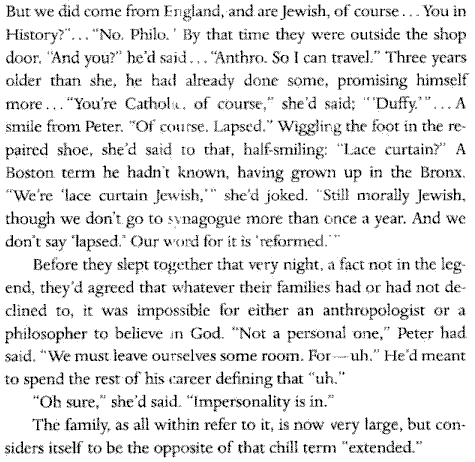
Strange Bedfellows:

* Pictured next to John Updike
in “Multimedia” at the top of
today’s NY Times obituaries
(pdf, 1 megabyte).
“…right through hell
there is a path…”
— Malcolm Lowry
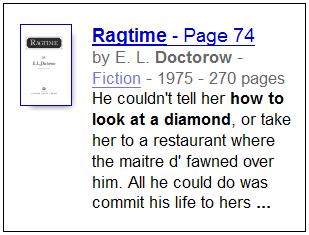
Related material:
This morning’s
New York Times obituaries…
…and The Restaurant Quarré in Berlin,

Thanks for a reference
to this story go to
Robert Bringhurst,
in his own way a
Cleric of the Grammaton.
Dark Materials
Before thir eyes in sudden view appear The secrets of the hoarie deep, a dark Illimitable Ocean without bound, Without dimension, where length, breadth, and highth, And time and place are lost; where eldest Night And Chaos, Ancestors of Nature, hold Eternal Anarchie, amidst the noise Of endless warrs and by confusion stand. For hot, cold, moist, and dry, four Champions fierce Strive here for Maistrie, and to Battel bring amidst the noise Thir embryon Atoms.... ... Into this wilde Abyss, The Womb of nature and perhaps her Grave, Of neither Sea, nor Shore, nor Air, nor Fire, But all these in thir pregnant causes mixt Confus'dly, and which thus must ever fight, Unless th' Almighty Maker them ordain His dark materials to create more Worlds, Into this wilde Abyss the warie fiend Stood on the brink of Hell and look'd a while, Pondering his Voyage.... -- John Milton, Paradise Lost, Book II
From the weblog of David Lavery, literature, film, and television scholar/critic, now teaching at Middle Tennessee State University–
Lavery’s quote of the day (6/27/09)-
“Art is based on second love, not first love. In it we make a return to something which we had willfully alienated. The child is occupied mostly with things, but it is because he is still unfurnished with systematic ideas, not because he is a ripe citizen by nature and comes already trailing clouds of glory. Images are clouds of glory for the man who has discovered that ideas are a sort of darkness.”
–John Crowe Ransom
Posted by Lavery on Friday, June 26, 2009, at 9:00 PM
Apocatastasis Now
I give you the end of a golden string,
Only wind it into a ball:
It will lead you in at Heavens gate,
Built in Jerusalems wall.
— WILLIAM BLAKE
"In 'Apocatastasis Now: A Very Condensed Reading of William Blake's Jerusalem' (
— The Year's Work in English Studies, 2003: Vol. 82, No. 1, pp. 493-547
| Thriller |
|
From the website of Philip Pullman, president of The Blake Society:
"I must create a System…"
|
— “Beauty and Desecration,”
Roger Scruton
(link at aldaily.com today)
| “The formula reproduces exactly the essential features of the symbolic process of transformation. It shows the rotation of the mandala, the antithetical play of complementary (or compensatory) processes, then the apocatastasis, i.e., the restoration of an original state of wholeness….”
— Carl G. Jung in Aion
|
The death of the character Mary O’Brien in the 2002 film “Equilibrium,” broadcast in the U.S.A. Saturday evening, paralleled the reported death of Iran’s Neda Soltan on the same day (June 20). The reported last words of Soltan would also have been fitting for O’Brien. (Any such resemblance between a fictional character and a real person is, of course, purely coincidental.)
Text
|
Online Etymology Dictionary
|

"Discuss the geometry
underlying the above picture."
— Log24, June 11, 2009
From Mitchell Stephens, author of a website mentioned here yesterday:
“This paper is designed to be a conversation….
The ideas are organized loosely around a single theme: the Roman leader Pompey’s forced entry into the most sacred place of the Jewish temple. At issue are the origins and prevalence of doubt, even at the heart of religion….
The paper will be initially presented, with comments and additions, to the working group on ‘Secularism, Religious Authority, and the Mediation of Knowledge’ of the Center for Religion and Media at New York University on December 8, 2006.”
From the paper itself:
“All Pompey’s intrusion into the Holy of Holies will leave behind is one sentence in Tacitus; still, it is not hard to imagine it as a media show. As he enters this hidden room in the Temple of those weird, unGreek, Asian, tribal Jews, this cosmopolitan, sophisticated Roman is not just the insensitive anthropologist. He wants, to continue our imagining, to display the lack of contents of the Holy of Holies in a museum, to take them, like the treasures of Tutankhamen’s tomb, on tour. This all-powerful Roman wields klieg lights; he brings the press. He exposes. His expedition is something of an exposé. The whole scene feels as if it might have been filmed: like Dorothy’s peek behind the curtain at the diminutive Wizard of Oz. It feels as if it might have been televised: like Geraldo Rivera’s opening of Al Capone’s ‘secret vault.’ Pompey has in common with all journalists a desire to shove a microphone in God’s face. He wants to rant about what he has learned on his blog.
In his desecration of the Holy of Holies, Pompey has with him, in other words, what Jacques Derrida, in his essay ‘Faith and Knowledge,’ calls the ‘powers of abstraction’: ‘deracination, delocalization, disincarnation, formalization, universalizing schematization, objectification, telecommunication etc.'”
Related material:



And then there are
gemlike numbers
set free from words…
Today’s New York lottery:

These numbers also
name parts of a book
cited here Nov. 6, 2007:
|
… The actor is — Wallace Stevens in |
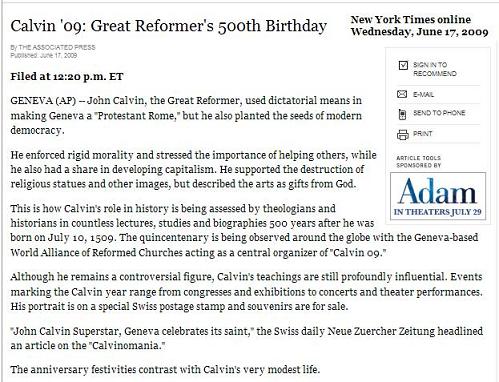
The above ad leads to…

… which in turn suggests
a picture linked to in yesterday’s
Bloomsday for Carlin:

Related material:
Hilbert vs. Pascal
(Jan. 23, 2009)
Back to the Real
Colum McCann on yesterday’s history:
“Fiction gives us access to a very real history.”
The Associated Press thought for today:
“Journalism allows its readers to witness history; fiction gives its readers an opportunity to live it.”
— John Hersey, American author (born on this date in 1914, died 1993).
From John Hersey’s The Child Buyer (1960):
“I was wondering about that this morning… About forgetting. I’ve always had an idea that each memory was a kind of picture, an insubstantial picture. I’ve thought of it as suddenly coming into your mind when you need it, something you’ve seen, something you’ve heard, then it may stay awhile, or else it flies out, then maybe it comes back another time…. If all the pictures went out, if I forgot everything, where would they go? Just out into the air? Into the sky? Back home around my bed, where my dreams stay?”
“We keep coming back and coming back
To the real: to the hotel instead of the hymns….”
— Wallace Stevens

Postcard from eBay
From Under the Volcano, by Malcolm Lowry, 1947, Chapter I:
|
"Actualmente Maju estudia Publicidad en la Universidad de Ciencias Aplicadas de Lima, es modelo de la agencia Elite Model Management y viaja por varios paises realizando campañas de publicidad, y es imagen publicitaria exclusiva de varias empresas en su país."
Related material: "His and Hers: Something" (Log24 entry last year for the anniversary of the births of John Calvin and of Maria Julia Mantilla.)
“V. is whatever lights you to the end of the street: she is also the dark annihilation waiting at the end of the street.” (Tony Tanner, page 36, "V. and V-2," in Pynchon: A Collection of Critical Essays, ed. Edward Mendelson. Prentice-Hall, 1978. 16-55). |
“For every kind of vampire,
there is a kind of cross.”
— Pynchon

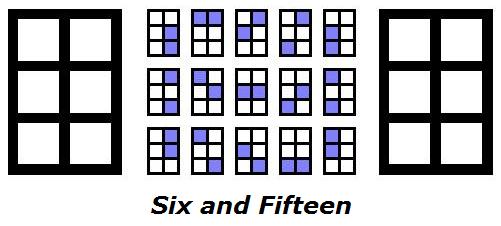
Performance art
illustrated:
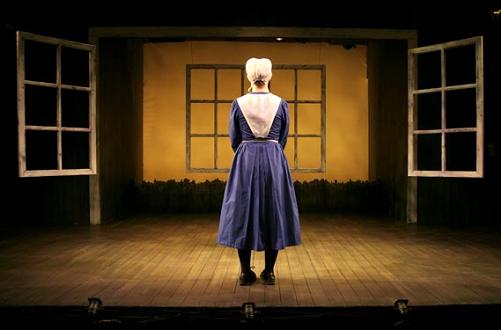
|
New York Times Friday, June 12, 2009, 4:14 PM
The Physics of Nothing
|
Sure they did.
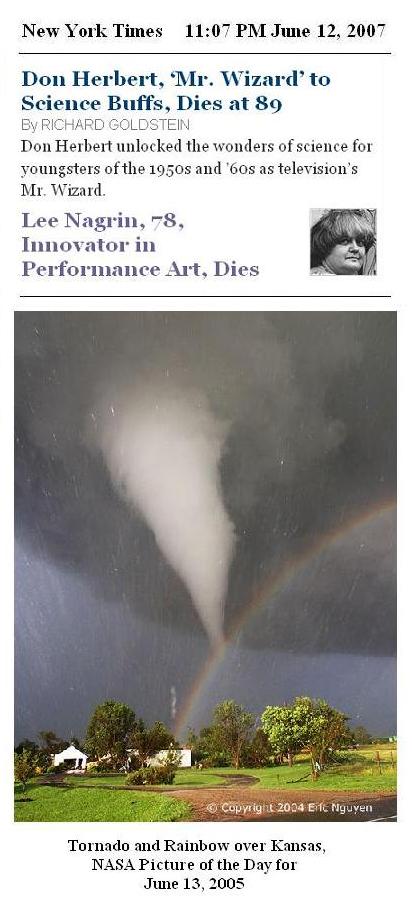
"A strange thing then happened." — L. Frank Baum
Related material:
Geometry for Jews
(continued from Michelangelo's birthday, 2003)
"Discuss the geometry underlying the above picture."
Abstraction and the Holocaust (Mark Godfrey, Yale University Press, 2007) describes one approach to such a discussion: Bochner "took a photograph of a new arrangement of blocks, cut it up, reprinted it as a negative, and arranged the four corners in every possible configuration using the serial principles of rotation and reversal to make Sixteen Isomorphs (Negative) of 1967, which he later illustrated alongside works by Donald Judd, Sol LeWitt and Eva Hesse in his Artforum article 'The Serial Attitude.' [December 1967, pp. 28-33]" Bochner's picture of "every possible configuration"–
Compare with the 24 figures in Frame Tales
(Log24, Nov. 10, 2008) and in Theme and Variations.
continued from
the two entries of
October 12, 2003:
Part I —
October 12, 2003 —

Above, an image from
Spinnin’ Wheel,
Spinnin’ True
Part II —
October 12, 2003 —

Above, an image from
Hello, Columbus
Part III —
June 10, 2009 —
Below, images from
a website:

“They all laughed at
Christopher Columbus…”
“It’s going to be accomplished
in steps, this establishment of
the Talented in the
scheme of things.”
— Anne McCaffrey, Radcliffe ’47
Click on images to enlarge.
Related material:
"I know what
nothing means."
— Joan Didion,
Play It As It Lays

Faust
President Faust of Harvard on Joan Didion:
"She was referring to life as a kind of improvisation: that magical crossroads of rigor and ease, structure and freedom, reason and intuition. What she calls being prepared to 'go with the change.'"
"I think about swimming with him into the cave at Portuguese Bend, about the swell of clear water, the way it changed, the swiftness and power it gained as it narrowed through the rocks at the base of the point. The tide had to be just right. We had to be in the water at the very moment the tide was right. We could only have done this a half dozen times at most during the two years we lived there but it is what I remember. Each time we did it I was afraid of missing the swell, hanging back, timing it wrong. John never was. You had to feel the swell change. You had to go with the change. He told me that. No eye is on the sparrow but he did tell me that."
From the same book:
"The craziness is receding but no clarity is taking its place."
— Joan Didion, The Year of Magical Thinking
For a magical crossroads at another university, see the five Log24 entries ending on November 25, 2005:

This holy icon
appeared at
N37°25.638'
W122°09.574'
on August 22, 2003,
at the Stanford campus.
Also from that date,
an example of clarity
in another holy icon —
|
|
— in honor of better days
at Harvard and of a member
of the Radcliffe Class of 1964.
The Grasshopper
Lies Heavy

“‘Oracle, why did you write
The Grasshopper Lies Heavy?
What are we supposed to learn?'”
— Philip K. Dick
“She began throwing the coins.“
Click on image
for further details.

(Image only; not for use.)
Those who prefer spam scripts
to persons may consult
the entry from midnight.
New collection release:
|
Those who actually try to view
the Wade collection will
encounter the following warning:
| To access the images in the ARTstor Digital Library you need to be affiliated with a participating institution (university, college, museum, public library or K-12 school). |

The Dissertations of Maximus Tyrius, translated from the Greek by Thomas Taylor, printed by C. Whittingham, London, for the translator, 1804, Vol. II, p. 55:
"You see the mutation of bodies, and the transition of generation, a path upwards and downwards according to Heraclitus; and again, as he says, one thing living the death, but dying the life of another. Thus fire lives the death of earth, and air lives the death of fire; water lives the death of air, and earth lives the death of water. You see a succession of life, and a mutation of bodies, both of which are the renovation of the whole."

For an interpretation
of the above figure
in terms of the classical
four elements discussed
in Four Quartets,
in Dissertations, and
in Angels & Demons,
see
Notes on Mathematics
and Narrative.
For a more entertaining
interpretation, see Fritz Leiber's
classic story "Damnation Morning."
“The action is in the plot, inaccessible to introspection, and only the characters know what’s going on.”
— James Hillman, quoted at David Lavery’s weblog.
See also
Powered by WordPress